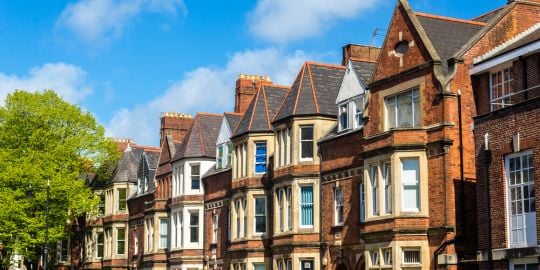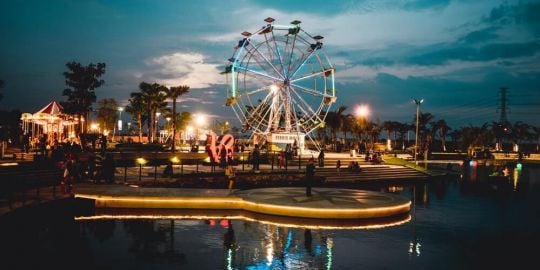Plenty of sun should make PR an ideal climate for solar panels relative to the states. In addition, higher electric rates than the states should incentivize more people to use solar panels. So, why are solar panels so rare in PR?
Why are solar panels rare in PR, despite high electric rates, much sun
Yes, I have the same question? I am planning to build in the near future and will include solar panels as part of the basic design.
Can you find qualified solar designers / installers in PR? If not, I will bring one from CT.
The cost here for panels are very expensive . Your better off with a turbine
Main issue is price, a 3Kw system will run you over $12K. There are solar power companies that will lease the system. I am still researching if it is worth it or if lease is better than purchasing. Not enough people have them installed to have a good measure.
Heat can also be an issue with the panels, they age quickly.
ReyP wrote:Heat can also be an issue with the panels, they age quickly.
True, most panel companies offer a 20yr warranty on their panels. Question is, will they be here to honor it? The lease system is a 20yr lease, they will install the system, monitor the system and perform all maintenance and warranties. You will pay a fix monthly fee for a pre set amount of energy. Their plans star at $76/month and up, they want to see your electric bills for a few months to measure how much you use. One of my concerns is how much will we need? Since we don't reside full time, it's hard to measure usage. They can add panels if it is not enough. For now it's not a good investment for us, since it is a fix fee and we are not permanent in the island. If you go over, you will be paying to AEE the additional wattage. You can only sell back to the grid up to 300kw a month, wich is the amount they estimate you use at night. And this will be my next question, will that amount be enough? So until I get some of my questions answered I will mot make a decision on going solar.
Maybe some of the folks in the forum have dome some research as well and can give their thoughts.
You would need to go off grid. PREPA claims that the infrastructure is so old it can't handle the feedback from tying into their grid. The typical solar panel ties into an inverter and when use is less than production (say during daylight hours) it fees back into the general grid. You absorb at night if your batteries dip below 50 percent. PREPA claims that it can't handle the fluctuations. Which may be true. The laws were changed 2-3 years ago regarding tying into the grid, it is virtually impossible now (from what I hear) to get solar/PREPA integration. Although there are companies that assist. You are looking a licensing/bureaucrat issue, essentially.
Bottom line: inefficient publicly owned company with far, far too generous labor laws are the culprit. You might consider going completely off grid. Getting the permit for this may be tricky. Puerto Rico ranks near the bottom for industrialized nations in business friendliness when it comes to construction/licensing. You might be able to skip this step depending on where you live. In PR, in many places, it's "sin now and ask for forgiveness later" when doing construction.
I suggest if you are looking into renewable energies, look into going completely off grid. The less you can deal with the government the better. I looked into it, and after speaking with lawyer friends and business people, determined that if and when I do I should be completely off grid.
Yup, the company we called told us it could take up to six months AFTER the contract is signed to have a fully functional and integrated system.
The AEE have to agree to have the integrated solar systems since they use federal funds. But the bureaucracy takes time, the installation is done in a day or two, it is the paperwork with the AEE that takes time.
I explore going completely off the grid, the main issue is that the batteries are expensive and the life expectative is about 5 years. Until the batteries are improved, it will be hard to upset the cost versus the economies. TESLA is working on a new residential battery that will have a 10yr warranty, I am keeping my eyes on how it will work out.
But even then, with the battery cost at over 5k and the system at 12-16K, I am not sure if this will be a cost efficient option. Doing the math, it will take over 15yr to see a ROI in a solar system that expensive. And by that time you will be looking at having to replace the solar panels, inverters are warranty for 5-10 yrs. So for now, I will continue looking to see if the solar industry will improve.
And we know that with oil prices low, solar power takes a back seat in development.
Hello,
I am an expat, lived in PR since 2013. I'm also CEO of Planet Solar, one of the oldest and largest solar installation companies in the US. Founded in CA and still with 4 offices there, one in Miami, and now headquartered here near San Patricio.
You are absolutely correct in thinking that solar makes great sense here in PR- which is why I opened an office here! However there is quite s but if solar here, you just don't see it because of predominantly flat roofs. In 2014, almost 5,000 solar installations were installed in PR.l, and estimates for 2015 are 6,500. That is only houses, commercial projects are even more prevalent. Go to the San Juan convention center, and see one of the largest and coolest solar installations in the US over the parking area.
**
Reason : please register your company in our Puerto Rico business directory. Thank you. Thank you
We invite you to read the forum code of conduct
Reason : promoting your services freely on the forum is not allowed. We invite you to register your company in the Puerto Rico business direcotry. Thank you. Thank you
We invite you to read the forum code of conduct
How do I sign up?you can contact me privately, I'd seriously like to get in on this!
Interesting article here: http://www.solarpowerworldonline.com/20 … ill-solar/
 Well written. Thanks!
Well written. Thanks!
Hello, I am sorry for the late reply, I don't check the blog often. You asked how to get started with Solar Panels in PR, and [Moderated] Contact me at my office xxx but over the holidays even better to email me at xxx I will send my wife Marilyn to meet with you, she is great.
Thanks
Ben
Reason : Removal of company name + exchange contact details via private messaging
We invite you to read the forum code of conduct
Actually, this article linked on this string has little to do with the solar market in PR - at least for ordinary people or businesses. It is true that many projects were approved by the utility company that then were 'dis-approved', but those were all utility-scale projects - ones that were designed to take investor funds, build a huge solar farm, and sell the power to the grid. They were canceled for a number of reasons, but mostly because there were 2GW of approved projects, and the grid only has the capacity to handle 1GW. The antiquated grid just won't handle large-scale projects, and PREPA does not have the money to fix the infrastructure to handle it.
However, for projects that are under 1mW (which offsets about $30,000 per month in electric bill for commercial property) solar is going super strong in PR. Distributed generation - where a system is built for a specific home or business, and occupants of that property consume the power right there on the spot without need for transmission lines, is the PERFECT solution for the archaic grid. 2015 has seen the largest amount of solar installed in PR history, and 2016 is expected to have 50% more. High electricity rates is what drives the solar industry, and Puerto Rico has some of the highest power rates in the US. The systems we design and install usually pay for themselves in 5 or 6 years, with a guaranteed ROI of 20%+! It's simply the best investment you can make.
Again, believe me, there is solar all over this island, both residential and commercial. You just don't see it due to flat roofs. But it still is on less than 1% of buildings (about the same as the most mature market in the US - CA), so we have a long way to go.








